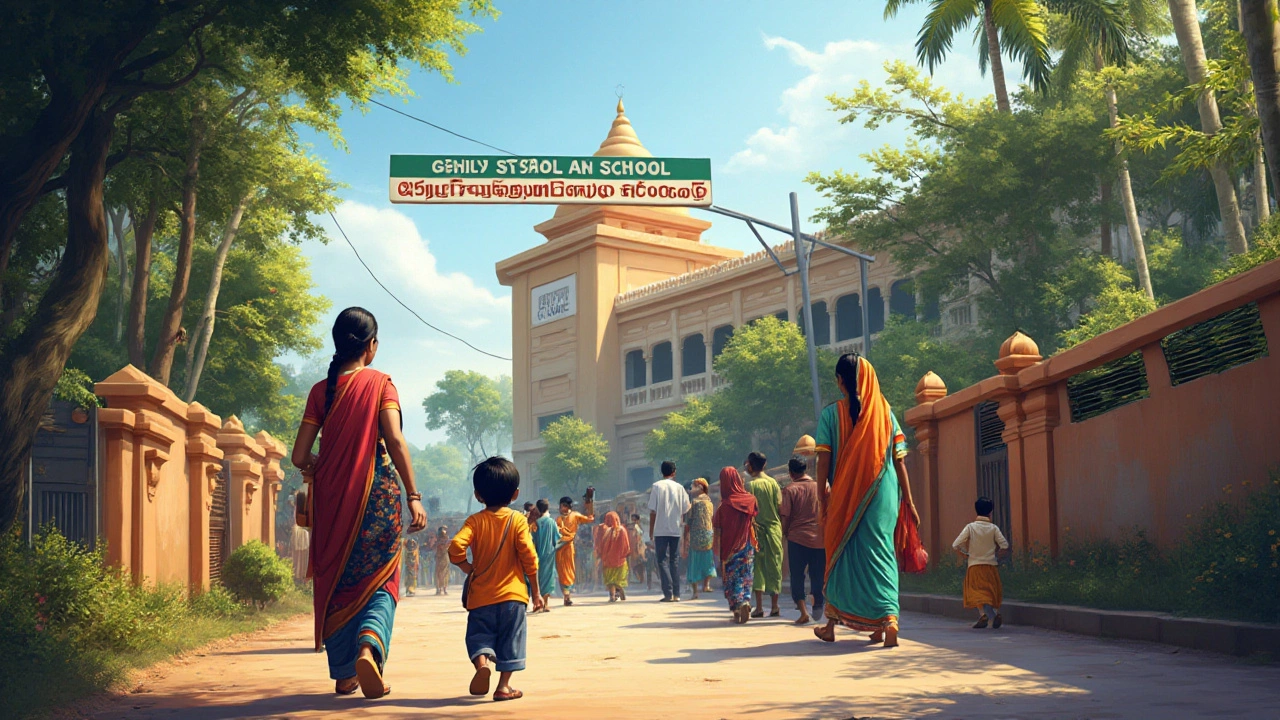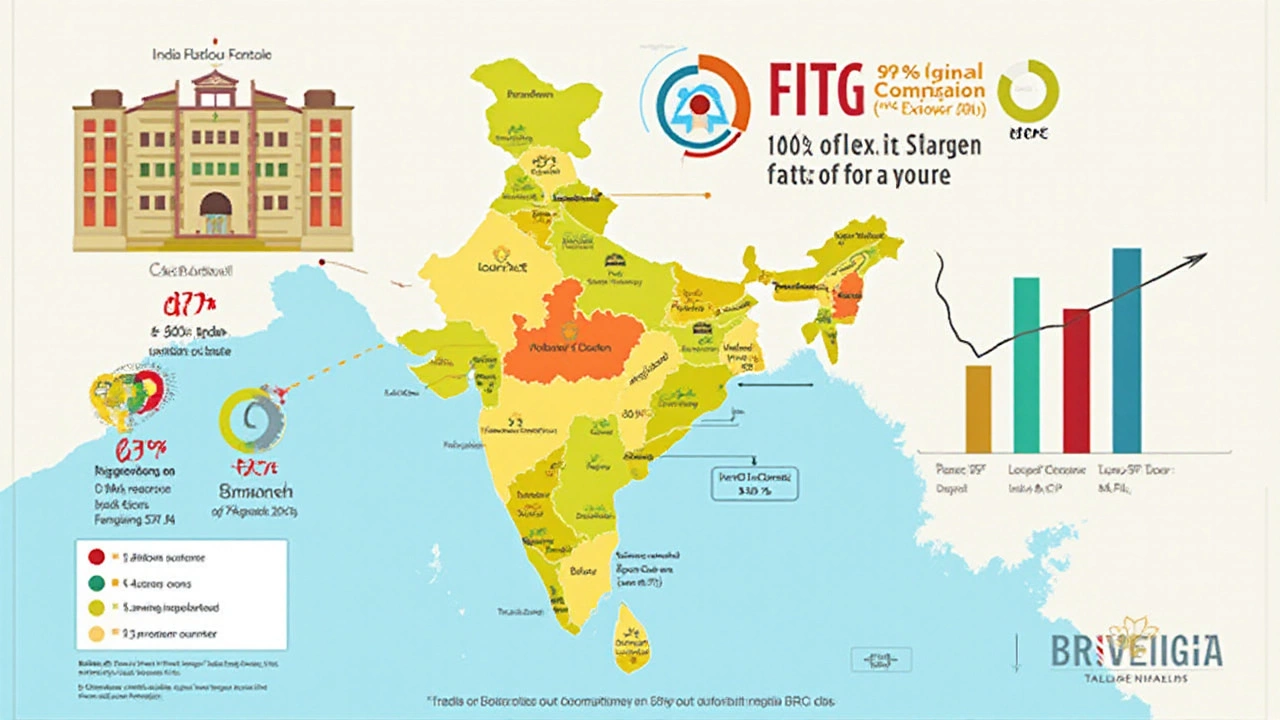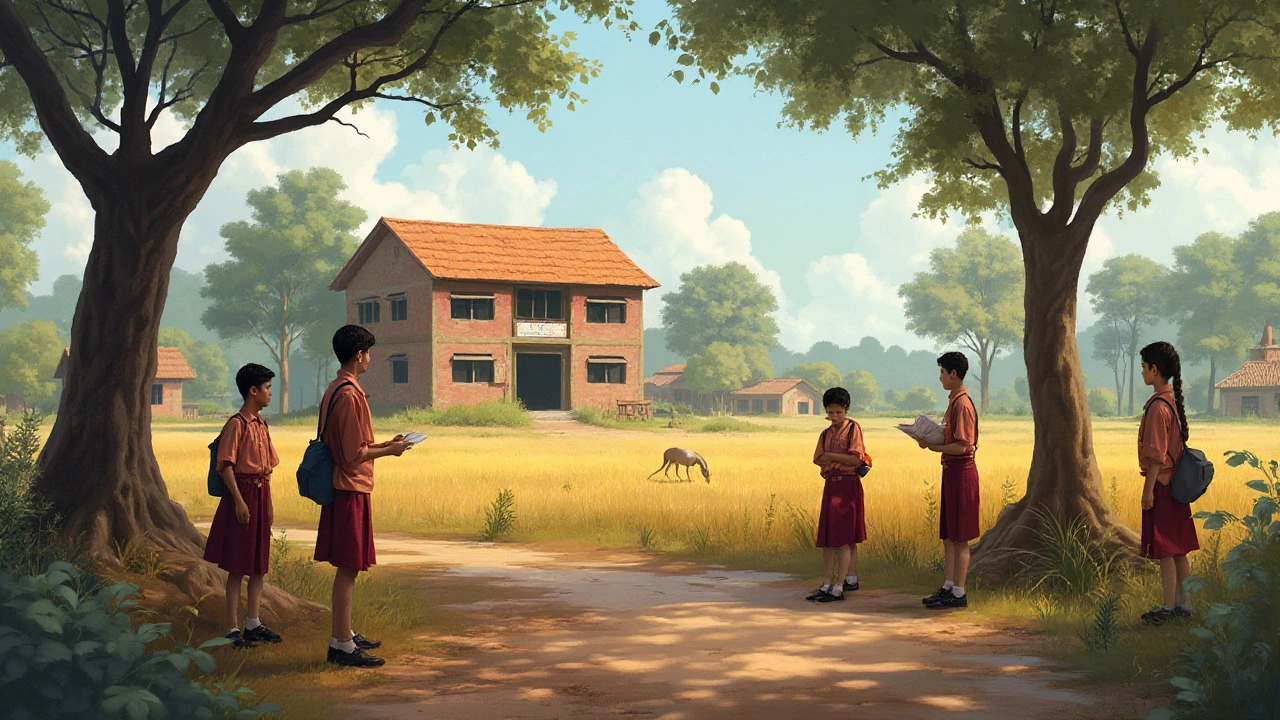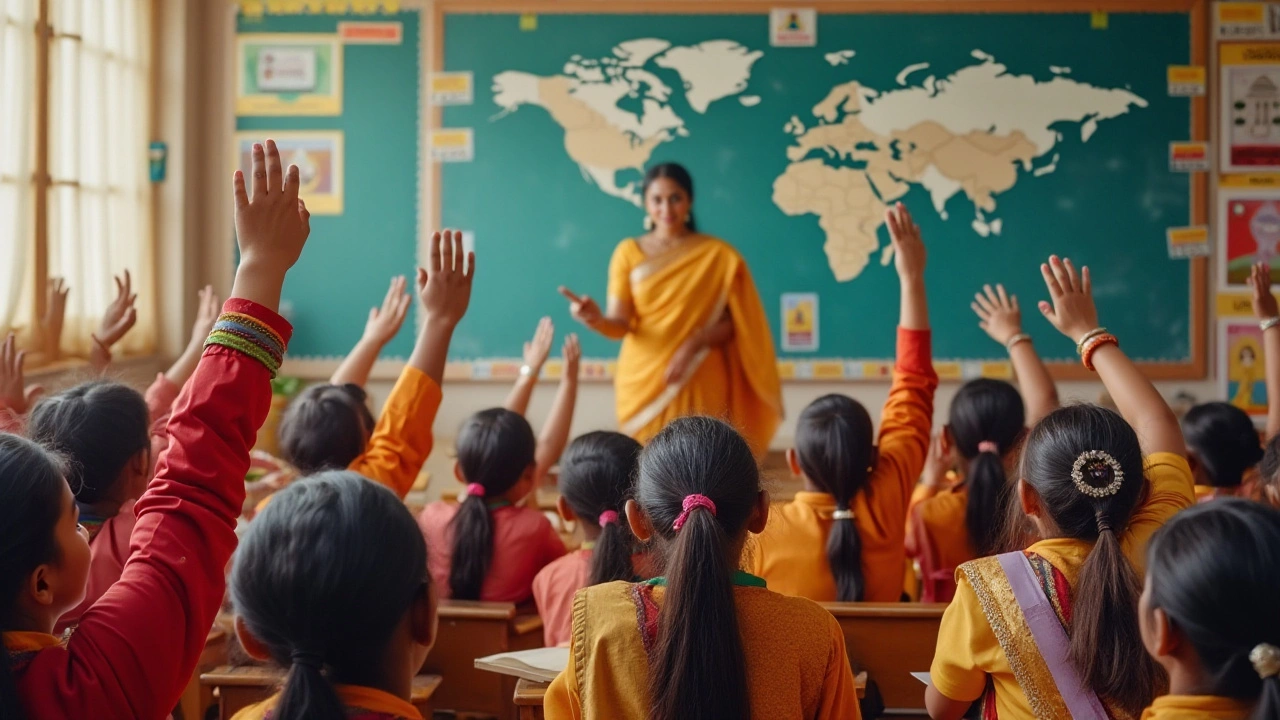Education in India bears a colorful tapestry that swathes the country's vast and diverse landscape, culminating in a myriad of school boards, among which the Central Board of Secondary Education (CBSE) stands prominent. Pioneering as one of the foremost school boards, CBSE thrives across the nation by offering a distinctive curriculum crafted to nurture young minds.
In this underpinning of academic pursuit, a particular curiosity emerges—wondering which state hosts the greatest number of CBSE schools. Investigating this reveals intriguing patterns and influential factors, shaping the educational opportunities available to millions.
Join us as we navigate the educational terrain of India, examining the role CBSE plays, which state flexes its dominance, and the factors that influence these educational dynamics.
- Understanding the CBSE Syllabus
- The Leading State for CBSE Schools
- Factors Influencing CBSE School Distribution
- Impact of CBSE Education
Understanding the CBSE Syllabus
The Central Board of Secondary Education, commonly referred to as CBSE, is renowned for its structured and well-rounded educational framework. Established in 1962, CBSE has grown to become one of the most influential and trusted educational boards in India. The syllabus is designed to promote a balance of academic rigor and conceptual understanding, catering to students across numerous regions with diverse demographics. One of the core features that distinguish CBSE is its focus on holistic education, which integrates academic insights with co-curricular engagements. This comprehensive approach assists students in developing a variety of skills such as analytical thinking, problem-solving, and effective communication, laying a strong foundation for future endeavors.
The syllabus is meticulously curated to accommodate the evolving needs of modern education, thereby ensuring that students are not only able to excel in traditional subjects but are also prepared for the global stage. Subjects offered under the CBSE curriculum include, but are not limited to, Mathematics, Science, Social Studies, and Languages. An interesting aspect of CBSE is its flexibility, allowing students to choose from elective subjects, giving them a chance to pursue their genuine interests and harness their innate talents. This customization acts as a catalyst, fostering a sense of responsibility and maturity in learners as they explore subjects aligned with their aspirations and career goals.
Assessments and Standards
Assessments under the CBSE syllabus are formulated to evaluate a student's comprehensive understanding and learning ability instead of rote memorization. A significant portion of the evaluation consists of internal assessments conducted by schools themselves, contributing to the final grade while encouraging continual learning and development. Exams are structured to test logical reasoning and critical thinking abilities, making education more dynamic and engaging. The prevailing format includes periodic tests, interactive projects, and practical examinations that enhance textbook knowledge. In line with this, the CBSE operates on the guidelines set by India's National Curriculum Framework, which ensures that the syllabus remains relevant and progressive.
"The curriculum, introduced by CBSE, not only fosters excellence in academics but also supports students in identifying and nurturing their unique abilities," states a significant report from the board.
This statement underscores the board's commitment to producing well-rounded individuals who are equipped to tackle real-world challenges. Beyond academics, CBSE supports a variety of extra-curricular activities, melding scholastic education with life skills. This blend promotes the discovery of hidden talents and the inculcation of values essential for societal contribution. On a broader scale, the board's initiatives in areas such as environmental education and life skills further the vision of nurturing competent, conscientious citizens. Importantly, the CBSE's adaptability to technological advancements ensures that the syllabus keeps pace with contemporary educational trends, preparing students for a future of innovation and change.

The Leading State for CBSE Schools
In our exploration of India's education landscape, the state of Uttar Pradesh often emerges as a frontrunner when it comes to housing the highest number of CBSE schools. This northern Indian state, known for its rich cultural heritage and vibrant history, also plays a pivotal role in shaping young minds across the country through its extensive network of educational institutions. The sheer number of schools here can be attributed to a combination of factors, including the state's large population, proactive educational policies, and a growing demand for quality education. But what makes Uttar Pradesh the hub of CBSE education?
The expansive geography merged with a high population density creates a sprawling canvas of educational opportunities. As one of the most populous states, Uttar Pradesh has a wide-ranging need for educational institutions to cater to its ever-growing population of students. The state government has consistently focused on enhancing educational infrastructure to match this demand, creating an environment where CBSE schools can flourish. The result is an impressive catalogue of institutions stretching from rural heartlands to bustling urban centers, each offering a standardized quality of education that's the hallmark of the CBSE syllabus.
Beyond numbers, it's enlightening to consider the quality these schools promise. A joint effort by educational authorities has ensured that CBSE schools in Uttar Pradesh not only remain numerous but consistently uphold the board's stringent quality standards. Teachers are frequently trained and curricula are regularly updated to adapt to new educational challenges, ensuring that students receive an education that's both contemporary and comprehensive. A quote from the National Council for Educational Research and Training (NCERT) highlights this, "Uttar Pradesh has always been at the forefront of implementing curriculum changes swiftly and effectively, setting an example for other states."
Let's delve deeper into the state's educational fabric through some figures. According to recent statistics, there are upwards of 6,000 CBSE-affiliated schools spread across Uttar Pradesh. A detailed view of these numbers can surprise many, with a considerable concentration in urban areas like Lucknow and Noida, yet ensuring a balanced spread into peripheral regions as well. The impact of such an extensive network is profound, creating multiple access points for quality education, thus broadening the horizon for students from various socio-economic backgrounds. Such large-scale implementation of CBSE schools has not only fueled academic prowess but has also nurtured all-round talent in arts, sports, and science, encouraging holistic development via a structured educational approach.

Factors Influencing CBSE School Distribution
The presence and distribution of CBSE schools across various states in India can often be likened to the spread of a vibrant cultural tapestry, with threads spun from economic, socio-political, and demographic elements. At the heart of this complex equation is population density, a factor that assertively dictates the educational demand and infrastructure development in any region. States with burgeoning populations emphasize ensuring adequate educational opportunities to accommodate their youthful residents' aspirations and needs.
Urbanization is another pivotal factor enhancing the distribution of CBSE schools. As more families pivot towards nuclear setups in cities, metropolitan areas become educational hubs, offering a buffet of schooling options. CBSE schools frequently populate these urban centers, appealing to parents keen on a standardized and comprehensive curriculum. This migration towards cities and expanding urban sprawls has reshaped education maps, concentrating schools in a manner that reflects the growing urban populace.
Political stances and government policies significantly sway the spread of CBSE institutions. States that prioritize educational enhancement often facilitate an environment conducive to establishing more schools. By instituting policies that simplify logistics and provide incentives to educational organizations, these states effectively nurture the growth of academic bodies.
"Good policies are key to creating an environment where educational institutions can thrive," noted a report by the Indian Education Society.This compelling relationship between governance and school distribution underscores the importance of strategic educational planning.
The socio-economic fabric of a region also plays an indispensable role. In states representing a diverse economic demographic, there's an eclectic mix of private and public CBSE schools, catering to varying financial capabilities. This diverseness helps maintain an educational equilibrium, offering all families the opportunity to seek high-quality education. With aspirations of a brighter future, families often prioritize schooling that opens global pathways—something CBSE schools effectively deliver.
The distribution network of CBSE schools isn't merely a reflection of numbers but a narrative encompassing cultural, economic, and geographical hues. Much like selecting the right ingredients for a recipe, policymakers, educators, and communities weigh these factors delicately to foster an environment where education can flourish while meeting the nation's dynamic needs.

Impact of CBSE Education
The influence of CBSE education extends far beyond the confines of classroom walls, etching a lasting imprint on students and the educational landscape of India. With its comprehensive and forward-looking curriculum, CBSE is well-regarded for fostering a holistic development in students. The syllabus is designed to encourage critical thinking, translating mathematical principles into tangible life skills, and unraveling scientific mysteries with hands-on experiments. As such, CBSE schools cultivate an environment of inquiry, urging students to question, learn, and grow. This approach lays down a robust foundation for higher education, equipping students with skills that are invaluable in university settings and beyond.
One of the significant effects of CBSE schools is their role in creating a standardized educational experience across India. By adhering to consistent benchmarks, CBSE ensures that students receive a uniform level of education, regardless of geographic location—a crucial aspect in a diverse country like India. A well-rounded curriculum also includes co-curricular activities such as sports, music, and art, prioritizing the development of various talents and interpersonal skills. Such an approach addresses the whole child, not merely their academic performance, thus nurturing future citizens who are balanced and well-prepared for life's myriad challenges.
Many parents opt for CBSE schools due to the board's emphasis on language proficiency, particularly English. This emphasis prepares students to engage on global platforms, whether in academia or their professional careers. Moreover, CBSE's affiliation with numerous national-level competitive exams such as JEE and NEET plays a pivotal role in shaping career prospects, as students find themselves better prepared to tackle these examinations. The influence of the CBSE board is starkly visible in how it shapes students into globally competitive individuals who can excel not only in India but anywhere in the world.
"The CBSE curriculum's competitive edge is nurtured not just through rote learning but by promoting clarity of concepts," noted education expert Dr. Priya Iyer.
With education being an ever-evolving field, the board embraces changes and integrates new methodologies to keep pace with trends that impact education globally. Technological advancements have been incorporated to allow students to access a wealth of knowledge digitally, enhancing their learning experience and preparing them for a tech-driven world. It's noteworthy how CBSE's impact stretches to influence educational policies and practices in both public and private spheres, reflecting its status as a dynamic force in shaping education in India today. Such focused and strategic initiatives ensure that students not only emerge as successful learners but also as influential leaders who can steer their communities toward progress.




